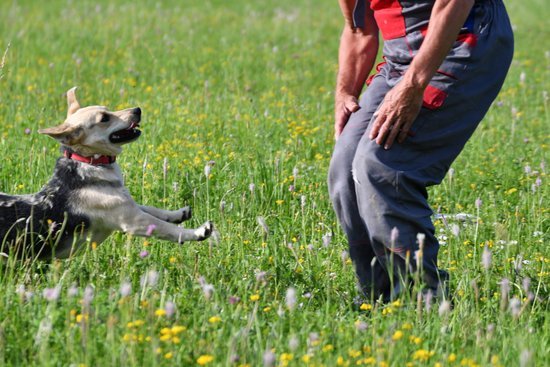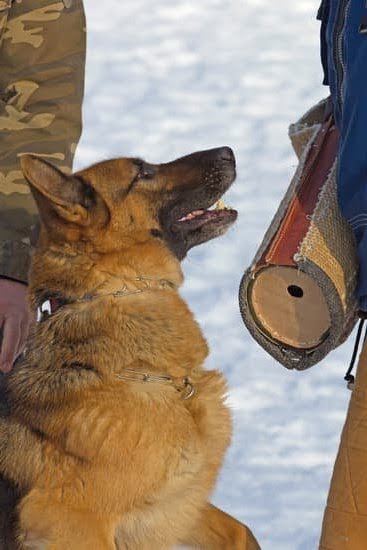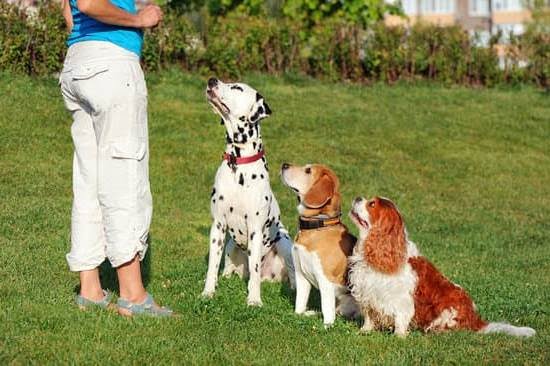What training does a service dog need? A service dog plays a crucial role in the lives of individuals with disabilities, providing assistance and support in various ways. From guiding individuals who are visually impaired to alerting those with epilepsy of an oncoming seizure, service dogs undergo extensive training to perform their tasks effectively. In this article, we will explore the specific training requirements for service dogs, including basic obedience, advanced skills, behavioral training, public access training, and more.
Service dogs come in different types, each requiring specific training tailored to their intended roles. Whether it’s a guide dog for the visually impaired, a hearing dog for the deaf, or a psychiatric service dog for individuals with mental health conditions, each type of service dog undergoes specialized training to meet the unique needs of their handlers.
Understanding these specific training requirements is essential in ensuring that service dogs can perform their duties effectively and provide the necessary assistance to their handlers.
In addition to specialized tasks, service dogs also undergo basic obedience training to ensure they exhibit good behavior in various situations. This includes commands such as sit, stay, heel, and come, as well as leash manners and proper etiquette in social settings. Basic obedience lays the foundation for more advanced skills and tasks that service dogs are trained to perform, ultimately contributing to their overall effectiveness in supporting individuals with disabilities.
The Different Types of Service Dogs and Their Specific Training Requirements
Service dogs play a crucial role in providing aid and support to individuals with disabilities. There are different types of service dogs, each with specific training requirements tailored to their intended function. These include:
- Guide Dogs: Guide dogs are specially trained to assist individuals who are blind or visually impaired. They undergo extensive training to navigate obstacles, stop at curbs, and avoid traffic.
- Hearing Dogs: Hearing dogs are trained to alert individuals who are deaf or hard of hearing to important sounds such as doorbells, phones, fire alarms, or someone calling their name.
- Medical Alert Dogs: These dogs are trained to detect changes in their handler’s body chemistry and alert them to an impending medical event such as a seizure, diabetic episode, or allergy attack.
Each type of service dog requires specialized training focused on the specific needs of their handlers. For example, guide dogs need navigation training and obedience skills, while medical alert dogs require scent detection training and the ability to accurately communicate alerts.
In addition to the specific tasks associated with their disability area, all service dogs must also undergo basic obedience training to ensure good manners and behavior in various settings. This includes commands such as sit, stay, come, and walking politely on a leash. The comprehensive training for different types of service dogs is crucial in ensuring they can effectively assist individuals with disabilities in their daily lives.
Basic Obedience Training for Service Dogs
Basic obedience training is an essential foundation for all service dogs, regardless of their specific role or type. This training encompasses the fundamental commands such as sit, stay, come, heel, and down. These commands are not only useful for controlling the dog in public spaces but also for ensuring that the service dog can respond to their handler’s needs promptly and reliably.
During basic obedience training, service dogs learn to focus on their handler and ignore distractions in the environment. This includes teaching them to remain calm and well-behaved in various settings such as busy streets, crowded areas, or around other animals. The ability to maintain self-control and follow commands is crucial for a service dog to effectively assist their handler while minimizing disruptions to the surrounding environment.
In addition to verbal cues, basic obedience training may also involve hand signals or specialized tools such as leashes or harnesses. Consistent reinforcement of these commands through positive reinforcement techniques is key to developing a strong and reliable bond between the service dog and their handler. Ultimately, basic obedience training sets the stage for more advanced skills and tasks that service dogs will need to perform in their specialized roles.
Advanced Skills and Tasks for Service Dogs
Specialized Tasks
In addition to basic obedience training, service dogs are also trained to perform specialized tasks based on the needs of their handlers. These tasks can include bracing, alerting to medical conditions such as seizures or low blood sugar, retrieving items, guiding visually impaired individuals, and providing balance assistance for those with mobility issues. Each service dog is trained to respond to specific cues and signals in order to assist their handler with their individual needs.
Public Access Skills
Service dogs must also be trained in advanced public access skills in order to accompany their handlers into various environments. This type of training includes learning how to behave appropriately in restaurants, stores, public transportation, and other public spaces. They must remain calm and focused in crowded and distracting environments, follow commands under a variety of circumstances, and exhibit good manners at all times.
Disability-Specific Training
Depending on the type of disability or condition they are meant to assist with, service dogs may require specialized training. For example, a dog trained to assist an individual with hearing impairment will need to be taught signal work or sound alerts, while a dog working with an individual who has autism may need specific training related to deep pressure therapy or interrupting repetitive behaviors.
Overall, advanced training for service dogs goes beyond basic obedience to encompass a wide range of complex tasks and skills that are tailored to meet the unique needs of their handlers. This specialized training allows these amazing animals to make a significant impact on the lives of those they serve.
Behavioral Training and Socialization for Service Dogs
Behavioral training and socialization are crucial aspects of the training process for service dogs. Behavioral training involves teaching a service dog appropriate behavior in a variety of situations, while socialization focuses on exposing the dog to different environments, people, and animals. Both components are essential for ensuring that a service dog can perform its duties effectively while remaining calm, confident, and well-behaved.
Service dogs often need to navigate crowded public spaces, interact with strangers, and remain focused despite potential distractions. This is where behavioral training shines, as it teaches the dog how to maintain proper behavior regardless of the circumstances. For example, a well-trained service dog should remain calm and obedient when faced with loud noises, sudden movements, or unfamiliar stimuli.
Socialization is equally important as it helps service dogs develop positive relationships with people and other animals. By exposing the dog to different environments and interactions from an early age, they are better equipped to handle the variety of situations they may encounter during their work. Properly socialized service dogs are more adaptable and less likely to become anxious or reactive in new or challenging situations.
In summary, behavioral training and socialization play a significant role in preparing service dogs for their vital responsibilities. These training components help ensure that service dogs can perform their duties effectively while maintaining good behavior and composure in any situation they may encounter.
| Training Component | Description |
|---|---|
| Behavioral Training | Teaching appropriate behavior in various situations |
| Socialization | Exposing the dog to different environments, people, and animals |
Public Access Training for Service Dogs
Service dogs play an essential role in assisting individuals with disabilities to navigate their daily lives and perform specific tasks. Public access training is a crucial aspect of a service dog’s training, as it ensures that the dog can accompany its handler in public spaces and behave appropriately in various environments.
During public access training, service dogs are taught to remain calm and well-behaved in different settings, including crowded streets, restaurants, shops, and public transportation. This type of training is particularly important for individuals with disabilities who rely on their service dogs to support them during various activities outside their homes. The following are some key elements of public access training for service dogs:
- Desensitization to noise and distractions: Service dogs are trained to remain focused on their handler despite loud noises, busy crowds, and other distractions commonly encountered in public spaces.
- Basic obedience commands: Dogs must demonstrate proficiency in basic commands such as sit, stay, heel, and come when called to ensure they can navigate public environments safely.
- Proper behavior around people and other animals: Service dogs must exhibit good manners around strangers and other animals they may encounter while out with their handlers.
It is essential for service dogs to undergo thorough public access training to ensure that they can provide effective assistance to their handlers in any environment. Additionally, this type of training helps promote positive interactions between service dogs and the general public, fostering greater acceptance and understanding of the crucial role these animals play in the lives of individuals with disabilities.
Training for Specific Disabilities and Conditions
Understanding the Unique Needs
Service dogs can be trained to assist individuals with a wide range of disabilities and conditions. Each disability or condition requires specialized training to ensure that the service dog can effectively meet the specific needs of their handler. Whether it’s guiding individuals who are blind, alerting individuals with diabetes to dangerous blood sugar levels, or providing support for individuals with PTSD, the training for each type of service dog is tailored to the unique requirements of their handler.
Customized Training Programs
For service dogs assisting individuals with physical disabilities, the training may focus on tasks such as retrieving items, opening doors, or providing balance and stability. In contrast, a service dog trained to assist someone with autism may require specialized training in behavior interruption techniques and calming strategies. The specific tasks and skills required depend on the individual’s needs, so it’s important for trainers to develop customized training programs that address these unique requirements.
Collaboration With Professionals
In some cases, service dog trainers may need to collaborate with healthcare professionals or specialists to better understand the needs of the individual they are working with. This collaboration ensures that the service dog is trained not only to perform specific tasks but also to provide emotional support and assistance in ways that are most beneficial for their handler’s condition or disability.
By taking into account professional recommendations and insights, trainers can further tailor their approach to best meet the needs of both the service dog and its handler.
The Importance of Ongoing Training and Support for Service Dogs
Service dogs play a crucial role in the lives of individuals with disabilities, providing them with assistance and support in their daily activities. However, the training of a service dog does not end once they have learned basic obedience and specific tasks. Ongoing training and support are essential to ensure that they continue to perform their duties effectively and adapt to the changing needs of their handlers.
One important aspect of ongoing training for service dogs is the reinforcement of basic obedience skills. This includes commands such as sit, stay, heel, and come, as well as leash manners and proper behavior in different environments. Regular practice and training sessions help to maintain these behaviors and prevent any regression in the dog’s performance.
In addition to basic obedience, service dogs may also require ongoing training for advanced tasks related to their handler’s specific disability or condition. For example, a diabetic alert dog may need regular practice in detecting changes in blood sugar levels, while a mobility assistance dog may need continuous training in retrieving items or providing stability during movement.
Consistent training ensures that the service dog remains proficient in carrying out these specialized tasks and can effectively respond to their handler’s needs.
Conclusion
In conclusion, the impact of well-trained service dogs on their handlers’ lives cannot be overstated. Service dogs are not just pets – they are essential companions and aides for individuals with disabilities and medical conditions. Through the careful and comprehensive training outlined in this article, service dogs are able to perform a wide range of tasks that help their handlers live more independently and safely.
From basic obedience training to advanced skills and specific disability-related tasks, service dogs undergo rigorous preparation to become reliable and effective partners for their owners. But it doesn’t stop there – ongoing behavioral training, socialization, and public access training ensure that service dogs can navigate various environments confidently while maintaining appropriate behavior.
The impact of a well-trained service dog goes beyond practical assistance; these animals provide emotional support and comfort to their handlers as well. The bond between a handler and their service dog is built on trust, companionship, and mutual reliance.
As such, the importance of ongoing support for both the dog and their handler cannot be underestimated. It is through this continuous training and support that the full potential of a service dog can be realized, ultimately enriching the lives of those they serve.
Frequently Asked Questions
What Training Method Is Used for Service Dogs?
The training method used for service dogs varies, but it typically involves a combination of positive reinforcement, repetition, and consistency. Service dog training can include obedience commands, specialized tasks related to the handler’s specific needs, and socialization in various environments. Many organizations also use clicker training and operant conditioning to train service dogs.
How Hard Is It to Train a Dog to Be a Service Dog?
Training a dog to be a service dog can be a challenging and time-consuming process. It requires a significant amount of dedication, patience, and consistency from the trainer or handler.
The specific tasks and skills that a service dog needs to learn depend on the individual needs of their handler. Training can take several months or even years, depending on the complexity of the tasks involved.
What’s the Difference Between a Support Dog and a Service Dog?
The main difference between a support dog and a service dog lies in their legal definitions and roles. A service dog is specifically trained to perform tasks that mitigate the handler’s disability, such as guiding individuals who are blind or providing alert assistance for individuals with epilepsy.
On the other hand, a support dog (or emotional support animal) provides comfort, companionship, and emotional support to individuals with psychological disorders but does not have the same level of specialized task training as a service dog. Additionally, only service dogs have legal access rights under the Americans with Disabilities Act (ADA).

Welcome to the blog! I am a professional dog trainer and have been working with dogs for many years. In this blog, I will be discussing various topics related to dog training, including tips, tricks, and advice. I hope you find this information helpful and informative. Thanks for reading!





